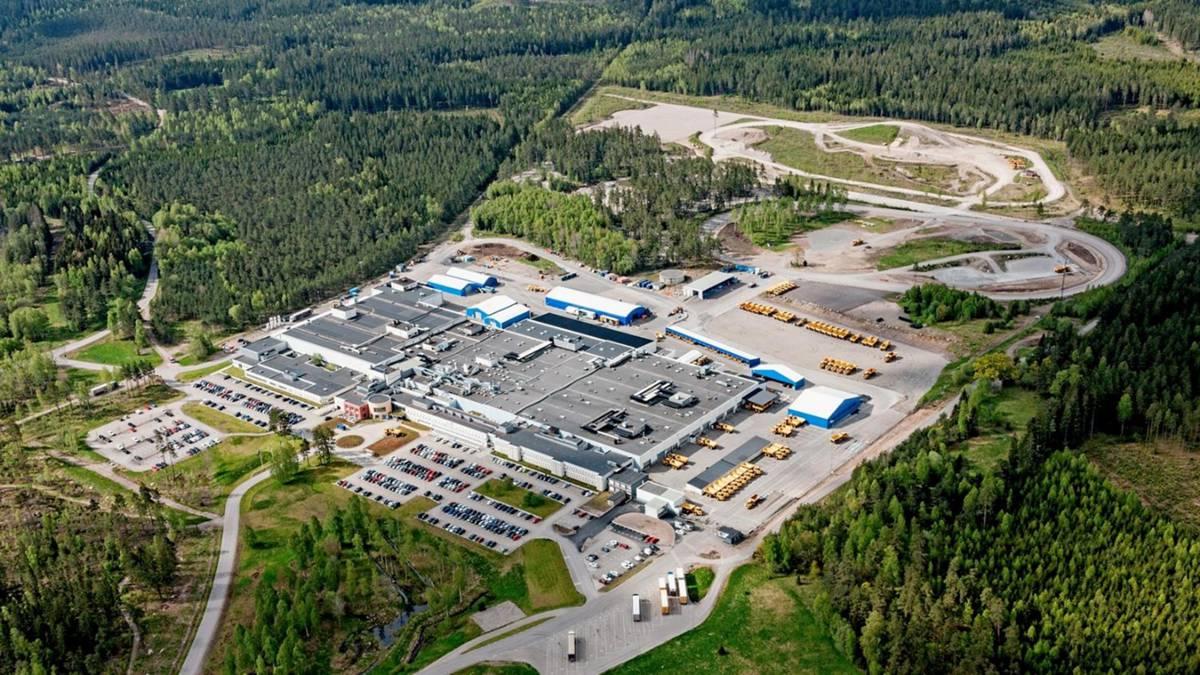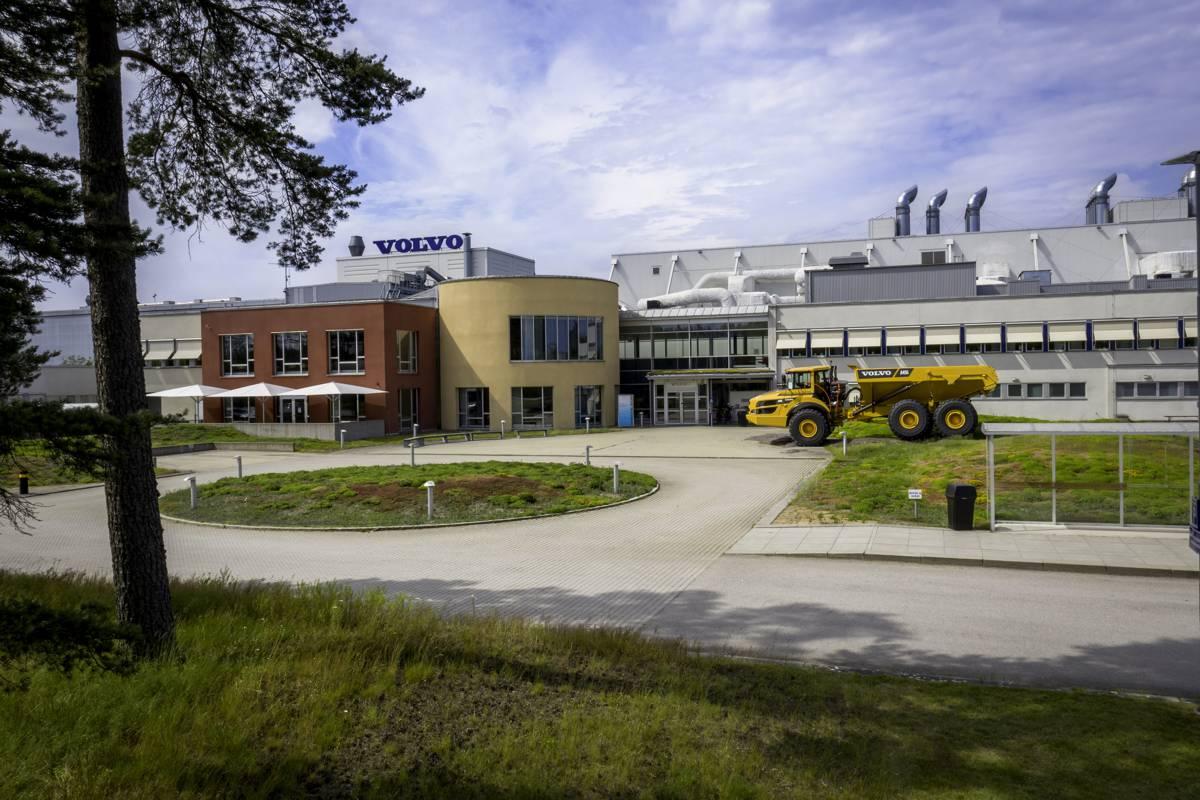Volvo CE Electric Transformation continues with Sustainable Hauler Solutions
04/11/22-FR-English-NL-footer
La transformation électrique de Volvo CE se poursuit avec des solutions de transport durables
 Image- Volvo Construction Equipment
Image- Volvo Construction Equipment
Volvo Construction Equipment a annoncé son intention d'investir 360 millions de SEK, soit environ 32,7 millions de dollars, dans son usine de production de Braås, en Suède, d'ici 2027.
L'usine de Braås, reconnue depuis longtemps pour ses références environnementales, est spécialisée dans la conception et la fabrication de tombereaux articulés pour le marché mondial. Elle a produit une machine de construction sans énergie fossile qui a été la première au monde à être livrée à un client - un A30G qui est maintenant utilisé sur le chantier du client NCC.
La décision d'investir à Braås a été prise par le conseil d'administration d'AB Volvo et signifie que l'usine sera adaptée au cours des prochaines années pour lui permettre de produire une gamme plus large de tombereaux articulés avec différents types de groupes motopropulseurs pour refléter l'évolution de la demande vers l'équipement avec des sources d'énergie plus durables.
L'investissement servira à étendre la capacité de production du site de 45 000 m² dans le sud de la Suède afin d'élargir la gamme de produits à l'avenir, avec l'ajout de nouveaux bâtiments et équipements de production. Tourné résolument vers l'avenir et conformément à son objectif de construire le monde dans lequel nous voulons vivre - et les lieux de travail dans lesquels nous voulons travailler - Volvo CE investira également dans l'automatisation et l'ergonomie pour à la fois réduire la nécessité pour les employés de s'engager dans tâches répétitives et créer un environnement de travail plus sûr.
Les techniques de fabrication pionnières n'ont rien de nouveau pour Braås. Depuis la production du premier tombereau articulé fabriqué en série au monde, le "Gravel Charlie", un tombereau de 10 tonnes, en 1966, l'usine est à la pointe de l'innovation. Le site est surtout connu pour avoir produit le plus gros tombereau articulé au monde, le 60 tonnes classe A60H, une véritable prouesse d'ingénierie.
En plus de construire le premier tombereau articulé au monde fabriqué à partir d'acier sans énergie fossile, le talent d'ingénieur basé ici a également joué un rôle déterminant dans la construction du premier prototype de tombereau articulé au monde alimenté par des piles à combustible à hydrogène - le concept Volvo HX04 - qui est actuellement le focus sur les tests pour développer les futures solutions hydrogène.

Image- Volvo Construction Equipment
Braås est également à l'avant-garde de la protection de l'environnement et a été le premier dans l'industrie de la construction à réaliser une opération neutre en carbone entièrement alimentée par des énergies renouvelables. En 2018, le site est également devenu une installation zéro décharge.
"L'industrie du transport et de la construction est en pleine transformation avec, entre autres, un nombre croissant de véhicules électrifiés", déclare Jonas Lakhall, directeur de site chez Volvo CE à Braås. "Cet investissement nous permettra d'adapter et d'étendre notre outil de production afin de pouvoir proposer une gamme plus large de machines - avec différents groupes motopropulseurs - à nos clients et de les aider à atteindre leurs ambitions de réduction des émissions.
« Il est important pour nous de continuer à être à l'avant-garde et de prendre des décisions claires pour respecter notre engagement basé sur la science visant à atteindre zéro émission nette de la chaîne de valeur d'ici 2040. En adaptant notre production aux machines électriques, nous progressons sur notre feuille de route d'électrification. ”
NJC.© Info Volvo Construction Equipment
------------------------------------------------------------------------------------------------------------------
04/11/22-English
Volvo CE Electric Transformation continues with Sustainable Hauler Solutions
 Image- Volvo Construction Equipment
Image- Volvo Construction Equipment
Volvo Construction Equipment has announced its intention to invest SEK 360 million, approximately $32.7million, into its production facility in Braås, Sweden between now and 2027.
The facility in Braås, long recognized for its environmental credentials, specializes in the design and manufacture of articulated haulers for the global market. It produced a fossil-free construction machine that was the first in the world to be delivered to a customer – an A30G which is now in use on customer NCC’s worksite.
The decision to invest in Braås was made by AB Volvo’s board of directors and means that the factory will be adapted over the coming years to enable it to produce a larger range of articulated haulers with different types of powertrain to reflect the shift in demand towards equipment with more sustainable power sources.
The investment will be used to extend production capacity at the 45,000 m² site in southern Sweden to broaden the product range going forwards, with the addition of new buildings and production equipment. Setting its sights firmly on the future and in line with its purpose to build the world we want to live in – and workplaces we want to work in – Volvo CE will also invest in automation and ergonomics to both reduce the need for employees to engage in repetitive tasks and create a safer work environment.
Pioneering manufacturing techniques is nothing new for Braås. Since producing the world’s first series manufactured articulated hauler, the “Gravel Charlie”, a 10-ton hauler, in 1966, the facility has been at the forefront of innovation. The site is most famous for producing the largest articulated hauler in the world, the 60-ton class A60H, a real feat of engineering.
As well as constructing the world’s first articulated hauler made from fossil-free steel, the engineering talent based here has also been instrumental in the building of the world’s first prototype articulated hauler powered by hydrogen fuel cells – the concept Volvo HX04 – which is currently the focus of testing to develop future hydrogen solutions.

Image- Volvo Construction Equipment
Braås is also leading the way in environmental protection and was the first in the construction industry to achieve a carbon neutral operation powered entirely by renewable energy. In 2018, the site also became a zero-landfill facility.
“The transport and construction industry is undergoing a transformation with, among other things, an increasing number of electrified vehicles,” says Jonas Lakhall, site manager at Volvo CE in Braås. “This investment will enable us to adapt and extend our production facility so that we can offer a broader range of machines – with different powertrains – to our customers and help them meet their emission reduction ambitions.
“It is important for us to continue to be at the forefront and make clear decisions to meet our Science Based Target commitment to achieve net zero value chain emissions by 2040. By adapting our production for electric machines, we are progressing along our electrification roadmap.”
NJC.© Info Volvo Construction Equipment
------------------------------------------------------------------------------------------------------------------
04/11/22-NL
Volvo CE Electric Transformation gaat verder met Sustainable Hauler Solutions
 Image- Volvo Construction Equipment
Image- Volvo Construction Equipment
Volvo Construction Equipment heeft het voornemen aangekondigd om tussen nu en 2027 SEK 360 miljoen, ongeveer $ 32,7 miljoen, te investeren in zijn productiefaciliteit in Braås, Zweden.
De fabriek in Braås, die al lang bekend staat om zijn milieuprestaties, is gespecialiseerd in het ontwerp en de fabricage van knikdumpers voor de wereldmarkt. Het produceerde een fossielvrije bouwmachine die als eerste ter wereld aan een klant werd geleverd - een A30G die nu in gebruik is op de werkplek van klant NCC.
De beslissing om te investeren in Braås werd genomen door de raad van bestuur van AB Volvo en betekent dat de fabriek de komende jaren zal worden aangepast om een grotere reeks knikdumpers met verschillende soorten aandrijflijnen te kunnen produceren om de verschuiving in de vraag naar materieel te weerspiegelen met duurzamere energiebronnen.
De investering zal worden gebruikt om de productiecapaciteit op de locatie van 45.000 m² in Zuid-Zweden uit te breiden om het productassortiment in de toekomst te verbreden met de toevoeging van nieuwe gebouwen en productieapparatuur. Met een stevige blik op de toekomst en in lijn met zijn doel om de wereld waarin we willen leven en de werkplekken waarin we willen werken te bouwen, zal Volvo CE ook investeren in automatisering en ergonomie om zowel de noodzaak voor werknemers om zich bezig te houden met repetitieve taken en creëer een veiligere werkomgeving.
Baanbrekende productietechnieken zijn niets nieuws voor Braås. Sinds de productie van 's werelds eerste in serie vervaardigde knikdumper, de "Gravel Charlie", een dumper van 10 ton, in 1966, heeft de faciliteit een voortrekkersrol gespeeld op het gebied van innovatie. De locatie is het meest bekend vanwege de productie van de grootste knikdumper ter wereld, de 60-tons klasse A60H, een echt staaltje techniek.
Naast de bouw van 's werelds eerste knikdumper gemaakt van fossielvrij staal, heeft het hier gestationeerde ingenieurstalent ook een belangrijke rol gespeeld bij de bouw van 's werelds eerste prototype knikdumper aangedreven door waterstofbrandstofcellen - het concept Volvo HX04 - dat momenteel de focus van testen om toekomstige waterstofoplossingen te ontwikkelen.

Image- Volvo Construction Equipment
Braås loopt ook voorop op het gebied van milieubescherming en was de eerste in de bouwsector die een klimaatneutrale operatie realiseerde die volledig werd aangedreven door hernieuwbare energie. In 2018 werd de site ook een afvalvrije faciliteit.
"De transport- en bouwsector ondergaat een transformatie met onder meer een toenemend aantal elektrische voertuigen", zegt Jonas Lakhall, sitemanager bij Volvo CE in Braås. “Deze investering stelt ons in staat om onze productiefaciliteit aan te passen en uit te breiden, zodat we een breder scala aan machines – met verschillende aandrijflijnen – aan onze klanten kunnen aanbieden en hen kunnen helpen hun ambities op het gebied van emissiereductie te realiseren.
“Het is belangrijk voor ons om voorop te blijven lopen en duidelijke beslissingen te nemen om te voldoen aan onze Science Based Target-verbintenis om tegen 2040 een netto nul-emissieketen te bereiken. Door onze productie aan te passen voor elektrische machines, maken we vorderingen op onze routekaart voor elektrificatie. ”
NJC.© Info Volvo Construction Equipment
--------------------------------------------------------------------------------------------------------------------
















